Chapter 10: Social Support, Relationships, and Physical Activity
Chapter Overview
Social Relationships and Health and Well-Being
Social Networks and Health
What is Social Support?
Models of Social Support
Main-Effect Model
Stress-Buffering Hypothesis
Thriving Through Relationships
Social Support and Physical Activity
Types of Social Support
Table 10.1
Other Types of Social Influences
Social Norms
Social Control
Parental Influences
Group Dynamics in Physical Activity Settings
Groupness
Cohesion
Social Identity and Self-Categorization Theory
Enhancing Social Support and Social Influences
Measuring Social Influences
Conclusion
Learning Exercises
Social Support, Relationships, and Physical Activity
Chapter Overview
- We live in a social world where our interactions with others influence our physical activity behavior. In this chapter, we will explore the different ways that other people influence our physical activity.
- First, we will explore social support, which is probably the area that has received the greatest attention in the research.
- We will also look at other types of social influences including social norms and social control.
- We will also explore the role of groups in our physical activity. We will examine how these social influences relate to physical activity and ways they have been used to promote physical activity.
- At the end of this chapter, we will learn about some of the many ways we measure these social influences. While we are focusing on physical activity, these social relationships also influence our health and well-being.
Social Relationships and Health and Well-Being
Social Networks and Health
- The recognition of how our social relationships influence our health and well-being has been around a long time. There are many pathways in which social networks or social contacts can influence one’s health, including influencing one’s behaviors (e.g., diet, exercise, smoking), how one feels (e.g., decreasing depression, improving self-esteem, helping us cope) and even improving one’s physiological functioning (e.g., improving immune function; Berkham et al., 2000).
- The effects of social networks on health are often separated into the structural aspects (i.e., how many people in your social network and how often you interact with them) and the functional aspects (i.e., the content of those interactions in terms of social support provided; Umbersonet al.,2010).
- Examples of this functional support include providing social support, creating social norms or expectations for how one is to act, and helping to regulate behavior (e.g., social control). These interactions with others can influence both mental health as well as health behaviors (Umbersonet al., 2010). Most of the social influences covered in this chapter will look at the functional aspect of social support

What is Social Support?
- Social support is described as the resources that one has available or perceives available to them from their social relationships (Gottlieb & Bergen, 2010).
- These resources are the ways that other people can help a person. There are two general ways to view social support: (a) perceived support and (b) received support (Gottlieb & Bergen, 2010).
- Perceived social support is the support one perceives available from others regardless of whether they use it or not. Received social support is the support that others provide to a person. This is the support that has been provided often in response to stressful situations.
- While both types of social support have been related to health behaviors, perceived support may help individuals develop positive coping skills and subsequently decrease the development of chronic disease (Uchino, 2009).
Models of Social Support
- When looking at how social support may influence health behaviors and health, several different models have been suggested.
- These models include a main-effect model, stress-buffering model and more recently the thriving through relationships model.
- Each model specifies a different path through which physical activity may be influenced by our social relationships.
Main-Effect Model
- The view that social support has a direct effect on well-being is called the main-effect model (Cohen & Wills, 1985).
- This model is closely tied to the idea that large social networks are associated with positive outcomes such as well-being and health.
- According to this model, the social support received has a protective effect on an individual as a whole.
- In this model, social support directly influences physical activity regardless of whether a person is experiencing stressful events.
Stress-Buffering Hypothesis
- The stress-buffering hypothesis focuses on the role of social support in helping individuals cope and manage stress (Cohen & Wills, 1985). In this model, social support plays a role in protecting someone from the negative effects of stress.
- Stress is experienced when a person does not think they will be able to meet the demands of the situation (Lazarus et al., 1984). This perception of a threat leads to the experience of stress including feelings of worry and helplessness. It also may lead to negative changes in behaviors including less exercise, alcohol abuse, and poor diet (Cohen & Wills, 1985).
- Social support may help a person in these potentially stressful situations in two ways.
- First, with support, they may not perceive that situation as stressful. Someone who knows that they have a friend that they can call on for help may not find a situation as stressful.
- The second way that social support could help in these potentially stressful situations is that support may provide added resources that will help them cope with the situation.
Thriving Through Relationships
- This model by Feeney and Collins (2015) looks at how social support plays a role in someone’s overall well-being. This model focuses on two pathways in which social support influences one’s well-being: (a) in the face of adversity and (b) seeking opportunities.
- In the first pathway, the focus is on helping an individual deal with life adversity. This pathway is similar to the stress-buffering pathway. It looks at how social support can help someone cope with challenges they are facing. In this case, the support person serves as a source of strength and provides support in a way that may help someone deal with challenges.
- The second pathway involves support that encourages people to seek out opportunities. In this manner, social support from others would encourage someone to set goals and push someone to grow, develop and thrive. In this pathway, the person is called a relational catalyst as they are helping someone seek out new opportunities.
Social Support and Physical Activity
- Social support has frequently been examined as a correlate of physical activity. Several reviews have suggested that there is a positive relationship between social support and physical activity (Scarapicchiaet al., 2017; Smithet al., 2017).
- In a review of 20 prospective studies that examined the role of social support for future physical activity participation, there was a small positive effect for social support, meaning that those who reported more social support at one time tended to be more active at a later point in time (Scarapicchiaet al., 2017).
- Using the thriving model of social support, Berli and colleagues (2018) examined how daily support from a spouse influenced one’s physical activity level that day. Couples who were previously inactive participated in the study with the goal of becoming more physically active.
- Social support, especially if it is from family, appears to have a positive influence on physical activity behavior (Scarapicchiaet al., 2017; Smithet al.,2017).
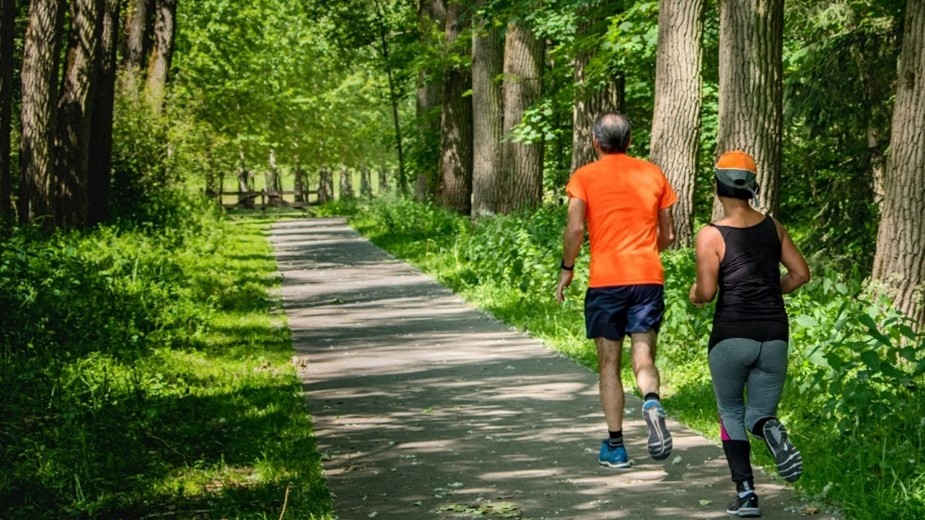
Types of Social Support
- There are several different ways of classifying social support. These different types of social support pertain to what is the actual content of the social support.
- Research in the physical activity area often combines social support into a summary score and does not differentiate the types of support (Beets et al., 2010; Scarapicchia et al., 2017).
- Among studies examining social support and youth physical activity, social support is sometimes separated into tangible support (e.g., instrumental and companionship) and intangible support (e.g., emotional and informational; Beets et al., 2010). Both types of support have been related to youth’s physical activity.
- Using a newly developed measurement tool, Golaszewski and Bartholomew (2019) reported that five different types of support (emotional, companionship, instrumental, informational, and validation support) were positively related to self-reported physical activity behavior, with companionship and informational support showing the strongest relationships.
Table 10.1
Examples of Different Types of Social Support (Gottlieb & Bergen, 2010; Golaszewski & Bartholomew, 2019)
|
Type of support |
Definition |
Examples |
|
Emotional |
Provision of caring and encouragement |
Helping someone keep going when they are struggling to reach a goal Cheering a person on or listening to challenges that someone is facing
|
|
Instrumental |
Tangible aid such as the provision of resources or services |
Someone helping a friend by driving them to the gym. A parent purchasing sport equipment for their child Spotting another person as they lift weights |
|
Informational |
Provision of advice, feedback, or help problem-solving |
Advice from a friend on how to overcome a plateau in their fitness goals Enlisting the help of a partner to problem-solve how to deal with a particular barrier for physical activity |
|
Companionship |
Having someone to be active with and spend time with |
Having someone to go for a walk with or lift weights with |
|
Esteem |
When others make someone feel like they matter, are valued, and accepted |
Someone commenting on how much they value being active with a person Helping another feel like they are needed |
|
Validation |
Provides social comparison in terms of behaviors and norms |
An individual who feels sore after just starting to work out, may seek out validation support from others who also were working out to see if this “soreness” is normal |
Other Types of Social Influences
- Social support is just one of the ways that social relationships may influence physical activity.
- Several other common social influences include social norms and social control.
Social Norms
- There are two primary types of social norms that have been investigated relative to physical activity behavior: Descriptive norms are based on what other people do while injunctive norms are norms that are based on what is viewed as desirable behavior by others.
- When asked reasons for being active, people typically report health-or appearance-related reasons and are less likely to report being active because others are too (Priebe & Spink, 2011). However, perceiving others to be active was related to physical activity participation; this leads the suggestion that descriptive norms are important for influencing physical activity behaviors (Priebe & Spink, 2011).
- While people may not recognize the role of norms in their own behavior, the research suggests that perceptions of norms (i.e., number of people active) and normative messaging are related to physical activity behaviors
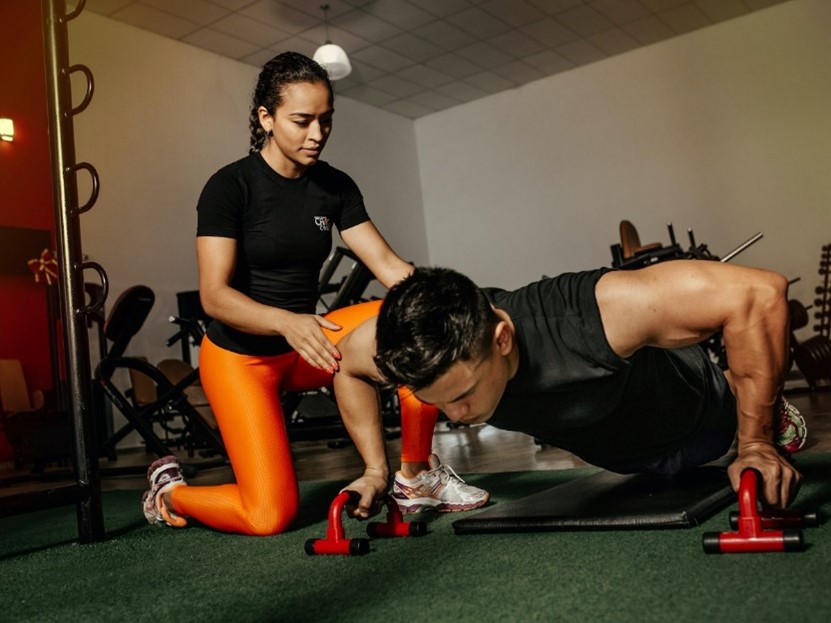
Social Control
- Another way that social relationships influence physical activity is through the provision of social control, which reflects the efforts by one person to monitor, prompt, or persuade another to engage in a desired behavior (Craddock et al., 2015).
- Social control is viewed as a more active influence where the person providing the influence is attempting to change or control the behavior of the recipient.
- Social control appears to have the potential to exert both a positive and negative impact depending on the type and other contextual factors surrounding the influence (Craddock et al., 2015; Scholz et al., 2021).
- Positive types of social control (e.g., more encouraging forms that prompt the behavior) appear to be related to positive outcomes (Craddock et al., 2015; Scholz et al., 2021) while negative social control (the more pressuring form of social control) may have a negative or no effect on the behavior (Craddock et al., 2015; Newsom et al., 2018).
Parental Influences
- Parents have been identified as playing a vital role in their children’s physical activity.
- Mâsse and colleagues (2017; 2020) grouped parental influences into three broad types: (a) autonomy promotion, (b) structure, and (c) neglect and control.
- Autonomy promotion reflects efforts by parents to support their child’s independence as well as promote physical activity through encouragement.
- Structure refers to parents creating an environment that promotes physical activity (e.g., co-participation, facilitating physical activity, modeling).
- Neglect and control reflect pressures by parents to prompt their child to be active without focusing on the child’s interest (e.g., nagging the child; Mâsse et al., 2017). This strategy includes pressuring influences such as nagging, punishing, or using threats to prompt physical activity.
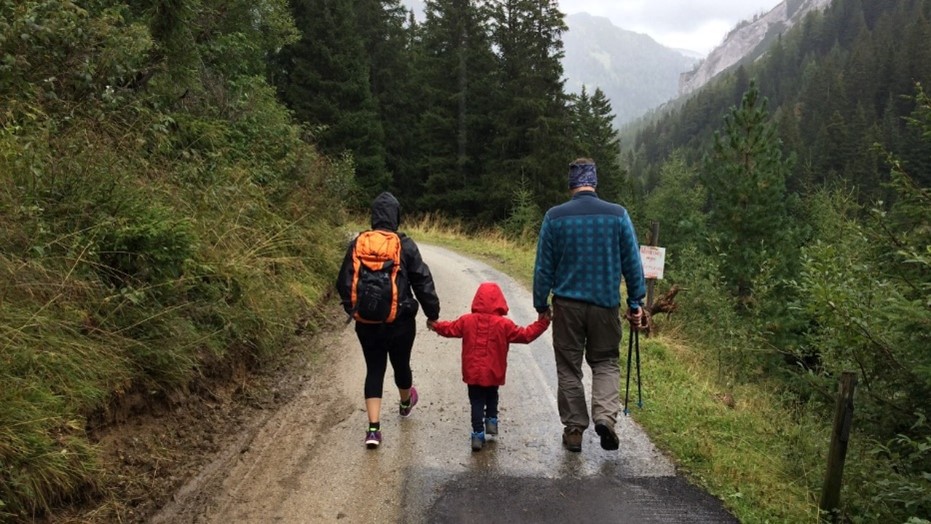
Group Dynamics in Physical Activity Settings
- It is thought that as humans we have a fundamental need to belong (Baumeister & Leary, 1995).
- Physical activity settings allow us to satisfy this need to belong by interacting with other people. Much of our physical activity is done with others and many people prefer to be active with others.
Groupness
- Groupness is the degree that a collection of individuals perceives themselves to be a group (Spinket al.,2010).
- Perceiving higher levels of groupness within a fitness class has been related to greater reports of enjoyment and effort (Graupenspergeret al., 2019).
- The group environment (e.g., member characteristics), structure of the group (e.g., positions, norms, and roles), and group processes (e.g., group cohesion) all have the potential to influence the experience of people within physical activity groups (Eys et al., 2019).
Cohesion
- Cohesion reflects the “dynamic process that is reflected in the tendency for a group to stick together and remain united” (Carronet al.,1998, p. 213). It is conceptualized with two dimensions.
- The first dimension relates either to the task such as getting a good workout in, or the social aspect such as enjoying the company of the others you are active with. The second dimension relates to either attraction to the group or group integration.
- The combination of these two dimensions creates four types of cohesion, namely attraction to the group-task, attraction to the group-social, group integration-task, and group integration-social.
- Cohesion has been described as an important aspect of physical activity groups and it is thought to relate to many positive outcomes including adherence or attendance and satisfaction with the settings (Burkeet al., 2014).
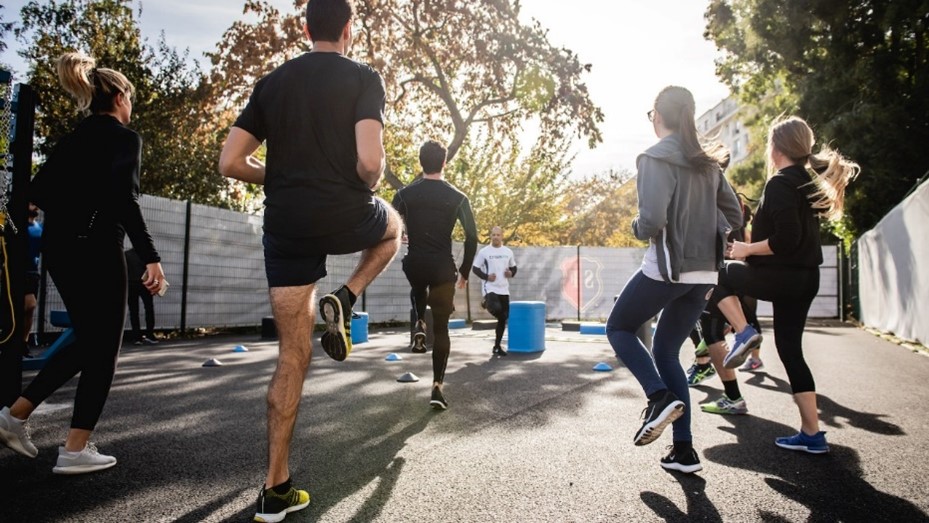
Social Identity and Self-Categorization Theory
- Social identity is another factor related to the group that has the potential to influence an individual’s behavior (Stevenset al., 2019). Social identity describes the identity that is formed when an individual derives their self-concept from being part of a specific social group (Tajfel, 1981).
- The concept of social identity has been receiving increasing attention in physical activity settings with it being investigated in organized running groups and exercise groups. In exercise group members, identifying with the group has been associated with higher attendance and effort exerted within the exercise classes (Dunlop & Beauchamp, 2011; Steffenset al., 2019).
- Self-categorization theory is a related theory that focuses on factors that contribute to perceiving oneself as part of a group and identifying with other group members (Beauchamp, 2019).
- Beauchamp (2019) describes the potential importance of social identity and self-categorization in the physical activity context to promote physical activity adherence.
Enhancing Social Support and Social Influences
- Interventions that promote social support have been shown to be effective, especially when used alongside other interventions that incorporate behavioral components such as goal setting and behavior contracts (Heathet al., 2012). There are numerous strategies to increase social support in efforts to promote physical activity.
- One way to facilitate social support is to incorporate it as part of physical activity groups.
- A common type of intervention used in physical activity settings is the team-building approach (Burke et al., 2014; Spink & Carron, 1993). This approach involves enhancing the group dynamics through targeting the group distinctiveness, structure, norms, individual positions and sacrifices, as well as interaction and communication (Burke et al., 2014). With team-building, the goal is to develop group processes like cohesion with the intent to increase adherence and attendance.
- Another group-based intervention is the group-mediated cognitive behavioral intervention (Brawleyet al., 2014). This approach uses group-dynamic principles to build the group and teach cognitive-behavioral strategies such as goal setting, barrier management, and self-monitoring. The key distinction with this approach is that the individual is weaned off the group so that they can become independent exercisers at the end.
Measuring Social Influences
- Self-reported questionnaires are the most common tool for measuring social influences such as social support, parental influences, and group cohesion.
- There have been several emerging strategies for assessing social influences including social network approaches, direct observation of social influences, and using “big data” from databases.
- Social network approaches involve individuals describing the networks they are involved in. These networks can be evaluated for a variety of characteristics such as the number of connections a person has, the number of connections within a network, and similarity of the people in a grouping (Prochnow et al., 2020).
- Measuring social influences using direct observations recording and coding interactions to reflect the type of influence. To gain a more objective measure of social support, researchers observed couples interacting and coded the behavior in terms of support provided (Collins & Feeney, 2004)
- Another way to gather information on social influences is to use “big data” from databases that exist through social network applications and wearable devices. These device-based measures and “big” datasets present an interesting avenue for future research examining social influences for physical activity, especially as the use of wearables such as smart watches increases.
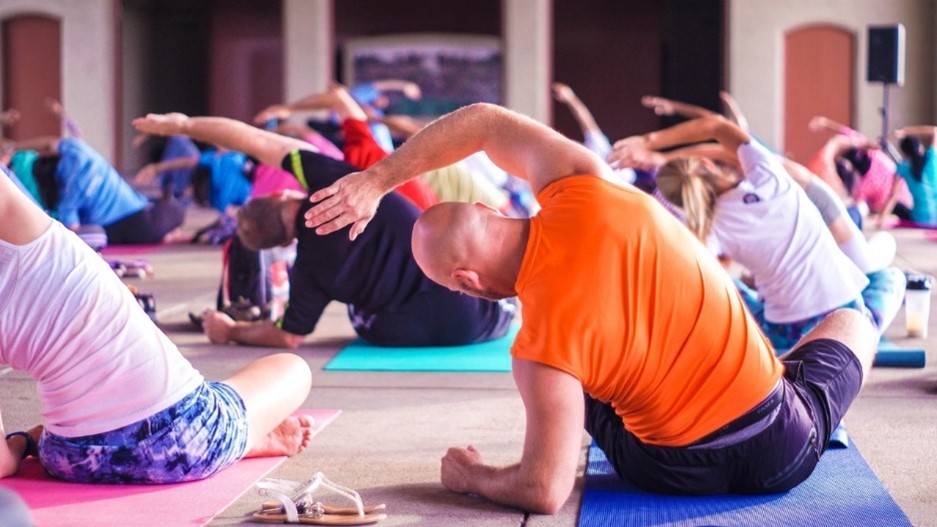
Conclusion
- Given our fundamental need to belong (Baumeister & Leary, 1995), social relationships are vital for our health and well-being (Umberson, et al., 2010).
- Social support refers to the resources that one perceives available or received from their social networks (Gottlieb & Bergen, 2010).
- There are many types of social support ranging from companionship support (e.g., being active together), emotional support (e.g., providing encouragement), and instrumental support (e.g., providing tangible assistance such as providing equipment).
- Receiving more social support is beneficial for participating in physical activity (Scarapicchia et al., 2017).
- There are several different frameworks for how social support may influence our physical activity and health. Social support is just one way that our social relationships may influence our behavior. Others, such as social norms, social control, and group processes also influence our physical activity behavior.
Learning Exercises
What are the main differences between a person serving as a “source of strength” and a “relational catalyst” when providing social support?
- Think about your own physical activity and provide an example of each type of social support that you have experienced. Which type do you think made the biggest difference in your own physical activity?
- Describe the descriptive norms and injunctive norms that you see from your family and friends as they relate to physical activity behaviors, such as exercise or active choices (e.g., taking the stairs).
- A parent is wondering how to help their child become more physically active. Based on the different types of parental influences, what recommendations would you give?
- Think about the settings where you have exercised with other people. How did being part of a group influence your experience? What is it you liked or did not like about being part of a group?
Glossary Terms
- Neglect and control: Reflect pressures by parents to prompt their child to be active without focusing on the child’s interest (e.g., nagging the child; Mâsse et al., 2017)
- Behavioral reactance: A common negative response in which an individual performs the opposite behavior or hides the unwanted behavior in response the pressuring type of social control (Scholz et al., 2021).
- Attraction to the group: The desire of an individual to be a part of the group
- Group integration: The unity of the group as a whole
- Perceived social support: The support one perceives available from others regardless of whether they use it or not.
- Received social support: The support that others provide to a person.
- Social support: The resources that one has available or perceives available to them from their social relationships (Gottlieb & Bergen, 2010).
- Main-effect model: The view that social support has a direct effect on well-being.
- Stress-buffering model: This model focuses on the role of social support in helping individuals cope and manage stress (Cohen & Wills, 1985).
- Thriving through relationships model: This model looks at how social support plays a role in someone’s overall well-being. This model focuses on two pathways in which social support influences one’s well-being: (a) in the face of adversity and (b) seeking opportunities.
- Relational catalyst: Support that promotes growth
- Social norms: Reflect perceptions surrounding what is appropriate behavior
- Social control: Reflects the efforts by one person to monitor, prompt, or persuade another to engage in a desired behavior (Craddock et al., 2015).
- Autonomy promotion: Reflects efforts by parents to support their child’s independence as well as promote physical activity through encouragement (Mâsse et al., 2017; Mâsse et al., 2020).
- Structure: Refers to parents creating an environment that promotes physical activity.
- Cohesion: The dynamic process that is reflected in the tendency for a group to stick together and remain united (Carronet al.,1998, p. 213).
- Groupness: The degree that a collection of individuals perceives themselves to be a group (Spinket al.,2010).
- Social identity: The identity that is formed when an individual derives part of who they are as a person (e.g., their self-concept) from being part of a specific social group (Tajfel, 1981).
- Self-categorization theory: A theory that focuses on factors that contribute to perceiving oneself as part of a group and identifying with other group members (Beauchamp, 2019).
- Instrumental support: Providing tangible assistance.
